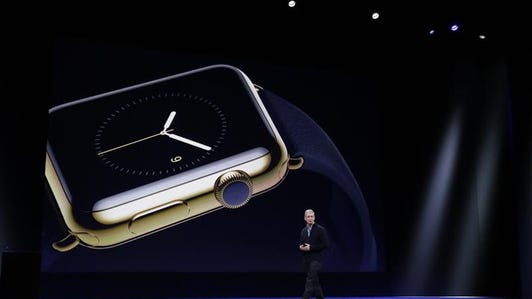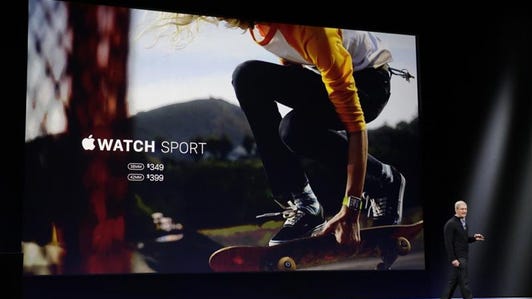
CNET
In some ways, the Apple Watch was more of a competitive threat to existing smartwatch developers before it was announced earlier this month.
Now that more details are known , there’s good and bad news for competitors. First, the bad news. As expected, the exquisite design of the Apple Watch hardware, software and interface looks poised to outshine other wearable temptations. Apple is making a strong commitment to the category with the largest assortment of models and accessories in its history of entering new categories.
But there’s also good news for competitors. As expected, at $349 the Apple Watch is expensive compared to most existing offerings, and we can certainly expect the 18-karat versions to be at a significant premium to that. It works only with an iPhone, and in fact requires an iPhone to work. And if you’re looking for a round product like the Moto 360 or the LG G Watch R , you’ll have to look elsewhere, specifically in the direction of Android Wear.
Google’s smartphone platform includes many smartwatches priced at least $100 below the base Apple Watch. In addition, the Moto 360 is no slouch when it comes to design. Apple has indicated that its smartwatch should get about a day of battery life, and while early Moto 360 users have had varying results, that’s possible for the Android Wear flagship as well. Indeed, we are likely to see more Android Wear devices launched, or at least announced at CES in January, before the Apple Watch is in the hands of consumers sometime in early 2015.
At the release of Android Wear, Google left open the question of whether the device category would work with iPhones. With lower prices and strong design, a fair amount of demand would likely be there, at least judging by the number of iPhone users who have embraced the Pebble watch; Android Wear would fall somewhere between that device’s base model and the Apple Watch in terms of price and design. Also, while Android Wear supports apps, the core experience is centered on Google Now, for which Apple has nothing directly comparable, given that Siri is still reactive.
Apple Watch keeps up with the times (pictures)






In addition to price/performance and functionality arguments, there would be some level of desire on the Google side. Despite the lack of promotion that Apple offers its apps in the App Store, Google has been an ardent iOS developer, offering excellent implementations of many flagship apps such as Search, Gmail, Chrome, Docs, Sheets, Drive, Maps and Hangouts, It even recently updated its long-neglected Google Voice app.
Finally, there would likely be interest from many of Google’s licensees. Samsung has a large-enough installed base that it might not care about tapping into the iPhone market, but smaller Android companies might, as well as potential newcomers to Android Wear such as traditional watch companies that don’t have a smartphone business.
The larger issue would likely center on the supply rather than the demand. Google has architected Android Wear app installation around Google Play as companions to Android smartphone apps, which obviously have no home on iOS. Pebble has been able to create a store-within-an-app for iOS, but it’s unclear whether Apple would let Google pull that off, or whether Google would want to. As an alternative, Google could take an approach similar to the one that Amazon has taken with its iOS Kindle app, enabling installation via the cloud and a conduit app on iOS that might allow tweaking and removal of Android Wear apps but wouldn’t allow browsing for or purchasing of Android Wear apps.
Clearly, Apple will do everything it can to make the Apple Watch the premier choice for iOS users. The Apple Pay mobile payments system is an early example of functionality that will tie together the company’s phones and wristwear. But as always, Apple must balance tight integration with being a broad-based platform, even accommodating developers whose parent company has ticked it off.



